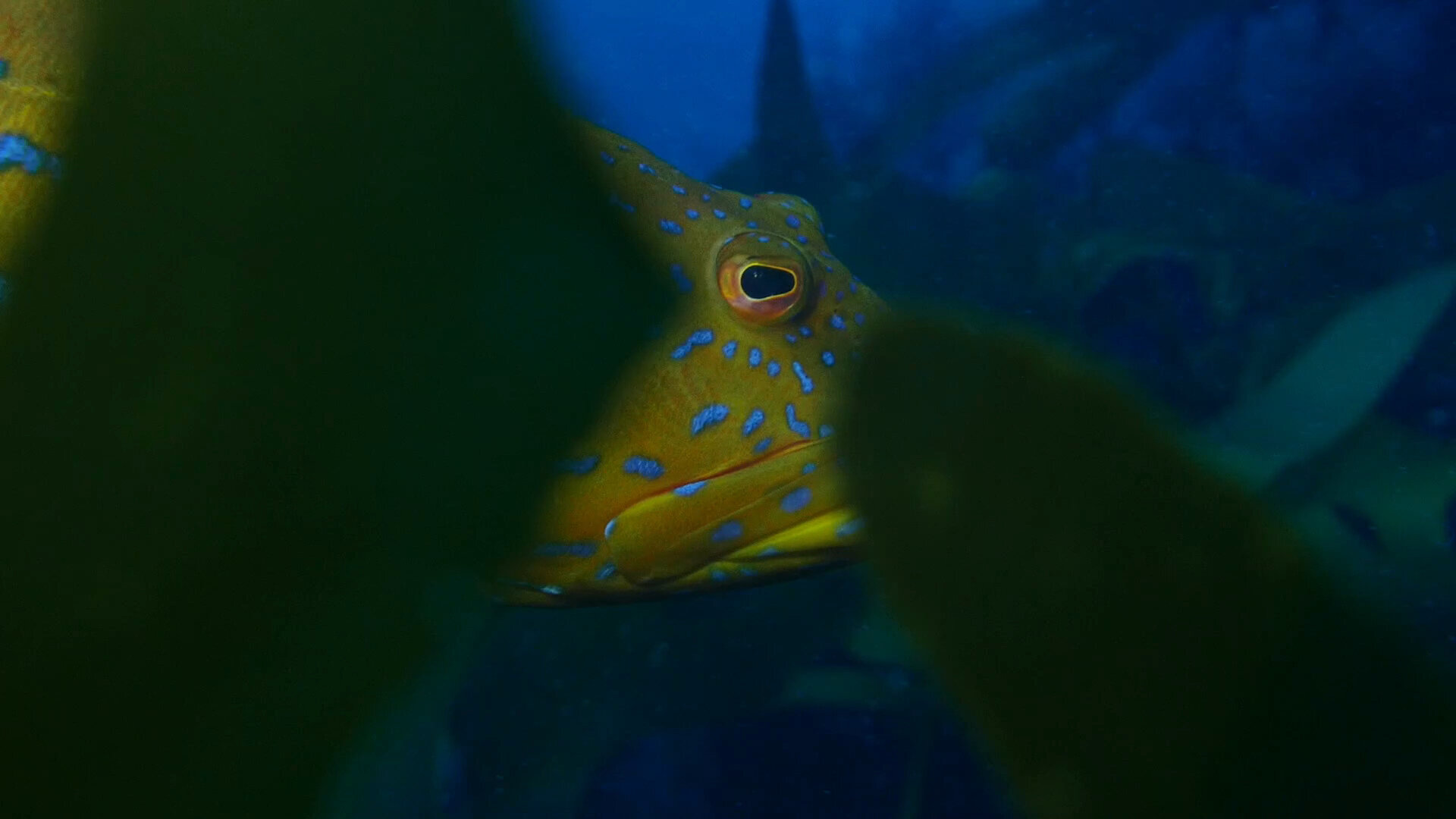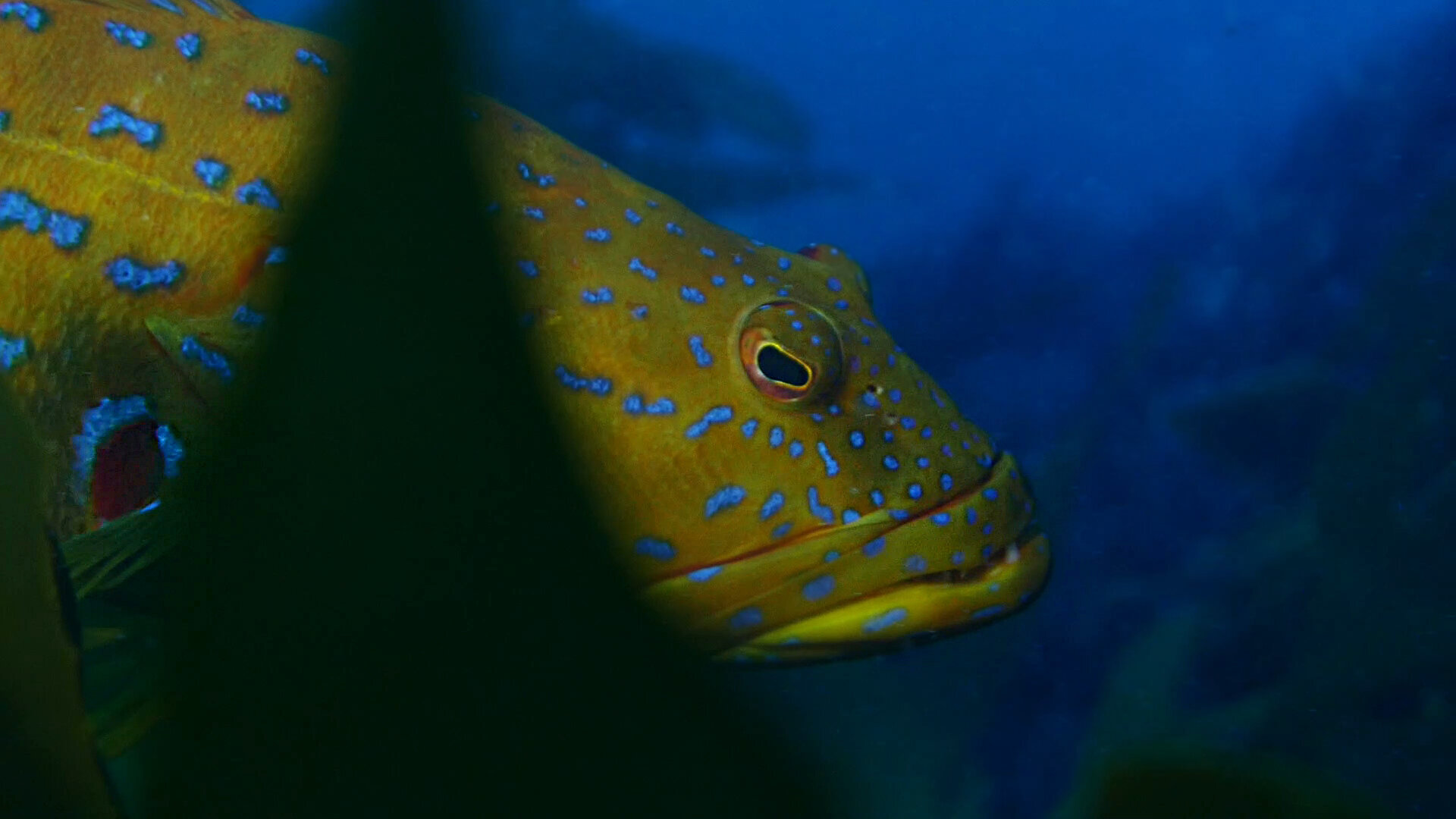harlequin fish
While it may look like a tropical fish species, the harlequin fish is a colourful, rocky reef species endemic to the Great Southern Reef. Affectionately known as “Harlies”, these beautifully vibrant fish like to live on high profile reefs, in caves and crevices in clear coastal waters. They are known to have high site fidelity (staying close to home) and are usually found resting along the seabed amidst short bursts of swimming.
Spot the difference
Their colour can vary greatly, ranging from orange, to pink, red, green or brown with large spots and dashes that can be yellow, green or even a brilliant blue as they reach adulthood. These spots change in colour and size as they reach maturity, which is also the only way to differentiate the males and the females. Researchers found that in the younger individuals, these spots are yellow and when males reach sexual maturity they turn blue. During the spawning season, the colour blotches in the males intensify, playing a role in courtship.
Patient predator
A classic daytime ambush predator, the harlequin has two eyes on the top of its head that operate independently to one another which allows them to set up a hunting spot and wait, very still, until a leather jacket or a small wrasse swims past as an easy target. They have enormous canine teeth in their large mouths located at the front of their jaws. Exclusively feeding on fish, they choose their prey based on size rather than species. They will quickly grab the small fish with their razor sharp teeth and bring it back to its cave to enjoy their meal.
Safe in sanctuaries
Harlequin fish can reach up to 60 cm in length and are known to live for at least 40 years. Their inquisitive nature makes them easily approachable by divers and, incidentally, spearfishers alike. This can make the species vulnerable to overfishing, as they take longer to reach sexual maturity and populations and do not replenish as quickly. This makes sanctuary zones an effective tool in conserving the species and unsurprisingly this is where Harlies are most commonly spotted along the Great Southern Reef.
More mysteries remain
A classic daytime ambush predator, the harlequin has two eyes on the top of its head that operate independently to one another which allows them to set up a hunting spot and wait, very still, until a leather jacket or a small wrasse swims past as an easy target. They have enormous canine teeth in their large mouths located at the front of their jaws. Exclusively feeding on fish, they choose their prey based on size rather than species. They will quickly grab the small fish with their razor sharp teeth and bring it back to its cave to enjoy their meal.
“These fish do have a lot more intelligence than we give them credit for. ”
Fast Facts:
Species: Othos dentex
Family: Serranidae (serranids, eg. groupers and sea basses)
Order: Perciforme (ray-finned fish)
Feeding: Small fishes
Habitat: High profile, rocky reefs and caves
Distribution: Endemic to the GSR
Special Power: Specialised eyes for ambush predating
Explore more of the Great Southern Reef
People
Impactful people with a close connection to the Great Southern Reef.
Places
Feature locations along the Great Southern Reef.
Marine Life
The weird and wonderful creatures found along the Great Southern Reef.









